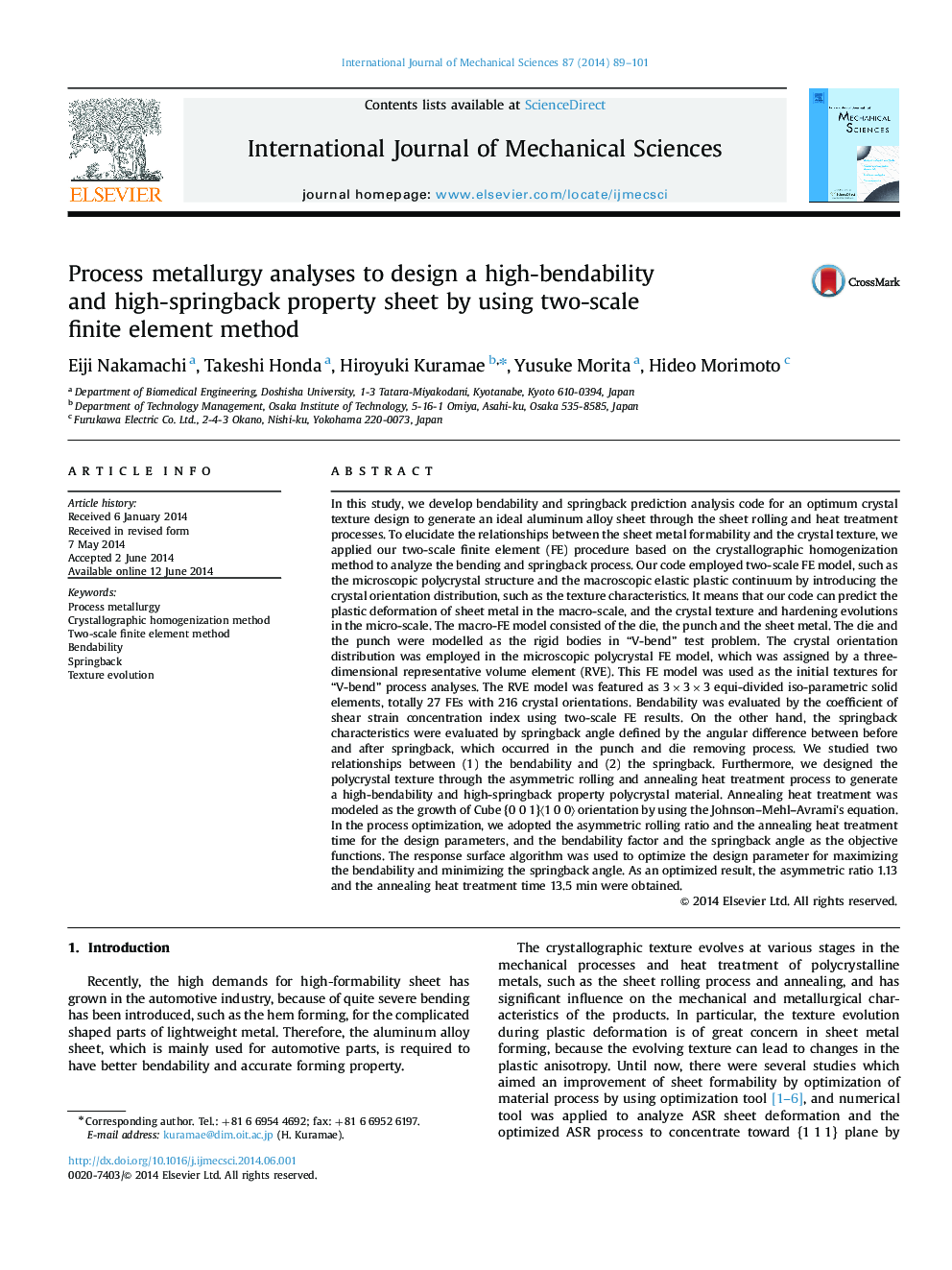| کد مقاله | کد نشریه | سال انتشار | مقاله انگلیسی | نسخه تمام متن |
|---|---|---|---|---|
| 782317 | 1464993 | 2014 | 13 صفحه PDF | دانلود رایگان |
• Process metallurgy simulation technique for a new high-formability Al alloy sheet.
• Design of polycrystal texture through asymmetric rolling and heat treatment process.
• We found an optimum process parameters to generate crystal texture.
In this study, we develop bendability and springback prediction analysis code for an optimum crystal texture design to generate an ideal aluminum alloy sheet through the sheet rolling and heat treatment processes. To elucidate the relationships between the sheet metal formability and the crystal texture, we applied our two-scale finite element (FE) procedure based on the crystallographic homogenization method to analyze the bending and springback process. Our code employed two-scale FE model, such as the microscopic polycrystal structure and the macroscopic elastic plastic continuum by introducing the crystal orientation distribution, such as the texture characteristics. It means that our code can predict the plastic deformation of sheet metal in the macro-scale, and the crystal texture and hardening evolutions in the micro-scale. The macro-FE model consisted of the die, the punch and the sheet metal. The die and the punch were modelled as the rigid bodies in “V-bend” test problem. The crystal orientation distribution was employed in the microscopic polycrystal FE model, which was assigned by a three-dimensional representative volume element (RVE). This FE model was used as the initial textures for “V-bend” process analyses. The RVE model was featured as 3×3×3 equi-divided iso-parametric solid elements, totally 27 FEs with 216 crystal orientations. Bendability was evaluated by the coefficient of shear strain concentration index using two-scale FE results. On the other hand, the springback characteristics were evaluated by springback angle defined by the angular difference between before and after springback, which occurred in the punch and die removing process. We studied two relationships between (1) the bendability and (2) the springback. Furthermore, we designed the polycrystal texture through the asymmetric rolling and annealing heat treatment process to generate a high-bendability and high-springback property polycrystal material. Annealing heat treatment was modeled as the growth of Cube {0 0 1}〈1 0 0〉 orientation by using the Johnson–Mehl–Avrami׳s equation. In the process optimization, we adopted the asymmetric rolling ratio and the annealing heat treatment time for the design parameters, and the bendability factor and the springback angle as the objective functions. The response surface algorithm was used to optimize the design parameter for maximizing the bendability and minimizing the springback angle. As an optimized result, the asymmetric ratio 1.13 and the annealing heat treatment time 13.5 min were obtained.
Journal: International Journal of Mechanical Sciences - Volume 87, October 2014, Pages 89–101
